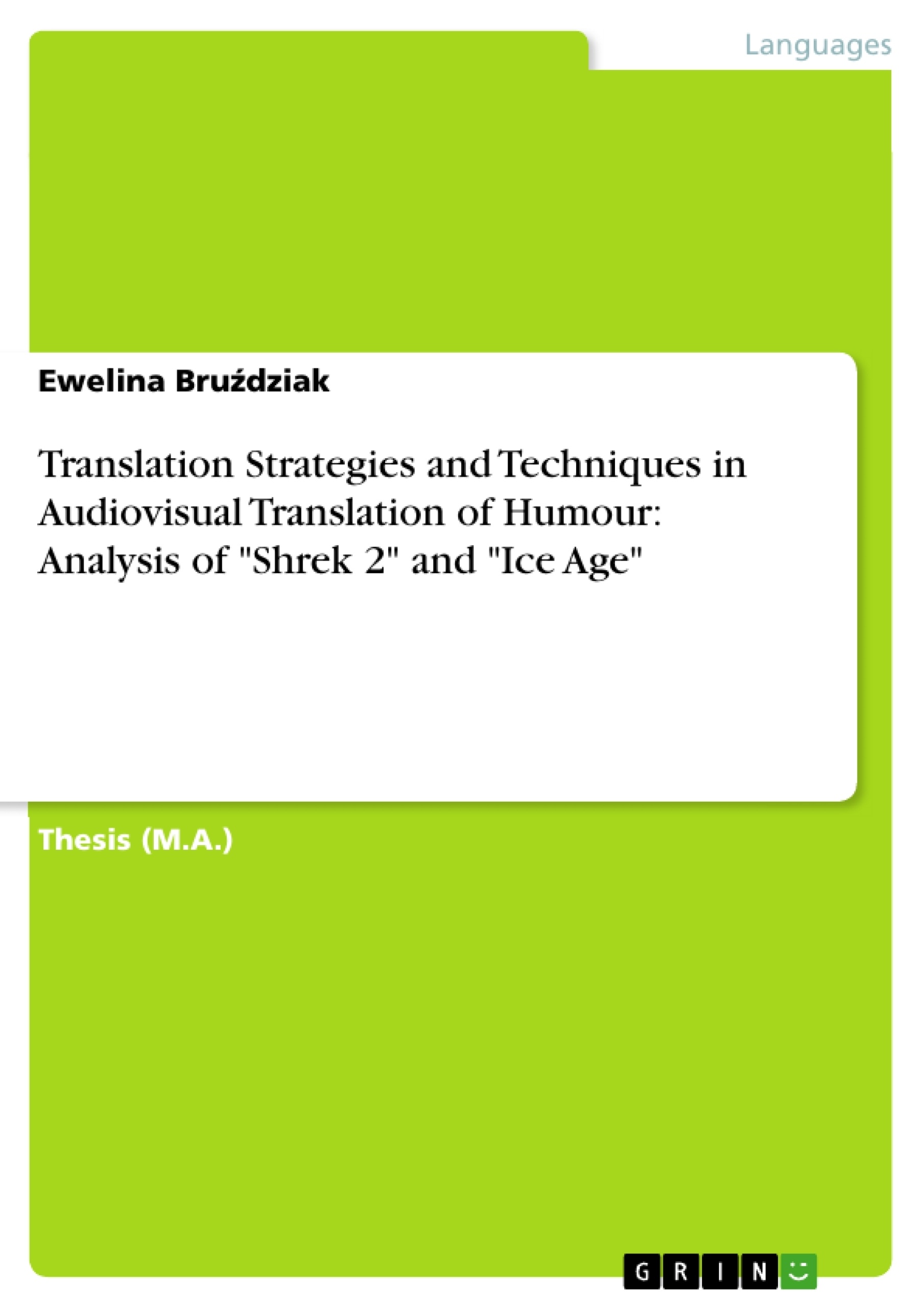Humour translation is an extremely difficult process which causes translators many problems. Rendering humour into a different language becomes even more complicated when the translator translates film dialogues for the purpose of dubbing
or subtitling.
The aim of this thesis is to analyse translation strategies and techniques applied in the process of humour translation in dubbing and subtitling. The analysis is based on two animated films: Shrek 2 and Ice Age. In the thesis the original version of film dialogues is compared with its dubbed and subtitled versions in Polish. The material for the study comes from DVD releases.
The thesis is divided into two chapters. In the first chapter the concept of humour is explained and humour translation is described. In this chapter I also provide definitions of translation strategy and translation technique, explain the difference between these two concepts and describe possible translation strategies and techniques in humour translation. In the second part of the first chapter
the specificity of audiovisual translation is discussed, and subtitling and dubbing are described as two different translation methods.
The second chapter offers a comparison between the Polish dubbed and subtitled dialogue versions. In this chapter I describe translation strategies and techniques used by the translators and compare the humorous effect evoked by them with the humorous effect of the original dialogues.
Table of Contents
- Introduction
- 1. Theoretical part
- 1.1. Humour - its definition and classification
- 1.2. Humour translation
- 1.2.1. Definition of humour translation
- 1.2.2. Untranslatability
- 1.2.3. Shifts of meaning
- 1.2.4. Humour translation and theory
- 1.2.5. Translation strategies and techniques in humour translation
- 1.3. Audiovisual translation
- 1.3.1. Definition of audiovisual translation
- 1.3.2. Subtitling
- 1.3.3. Dubbing
- 1.3.4. Translation or adaptation
- 2. Analytical part
- 2.1. Shrek 2 and Ice Age as humorous films
- 2.2. Translation techniques and strategies used in Shrek 2 and Ice Age
- 2.3. Language of film characters creating humorous effect
- 2.4. Skopos and the choice of translation strategy and technique
Objectives and Key Themes
This thesis investigates the challenges of translating humor in dubbing and subtitling. It aims to analyze translation strategies and techniques employed in adapting humorous content from two animated films, Shrek 2 and Ice Age, for a Polish audience. The analysis compares the original English dialogue with its Polish dubbed and subtitled versions.
- The nature and definition of humor and its translation
- Translation strategies and techniques used in humor translation
- Specificities of audiovisual translation, particularly subtitling and dubbing
- The impact of translation on the humorous effect in the target language
- The role of Skopos (purpose) in guiding translation choices
Chapter Summaries
The first chapter explores the concept of humor, its definition, and classification. It delves into the specific challenges of translating humor and examines different approaches to the task, focusing on the complexities of untranslatability, meaning shifts, and translation strategies. The chapter also discusses the nature of audiovisual translation, specifically subtitling and dubbing.
The second chapter delves into the analysis of humor translation in the two films, Shrek 2 and Ice Age. It examines translation techniques and strategies employed by the translators, comparing the humorous effect achieved in the Polish versions to the original English dialogue. The analysis considers the language used by the film characters to create humor and how translation strategies contribute to achieving a similar humorous effect in the target language.
Keywords
This study focuses on key concepts like humor translation, audiovisual translation, dubbing, subtitling, translation strategies, translation techniques, and Skopos. The research utilizes the example of animated films, Shrek 2 and Ice Age, to analyze how humor is translated effectively in different cultural contexts.
- Citar trabajo
- Ewelina Bruździak (Autor), 2011, Translation Strategies and Techniques in Audiovisual Translation of Humour: Analysis of "Shrek 2" and "Ice Age", Múnich, GRIN Verlag, https://www.grin.com/document/184630



